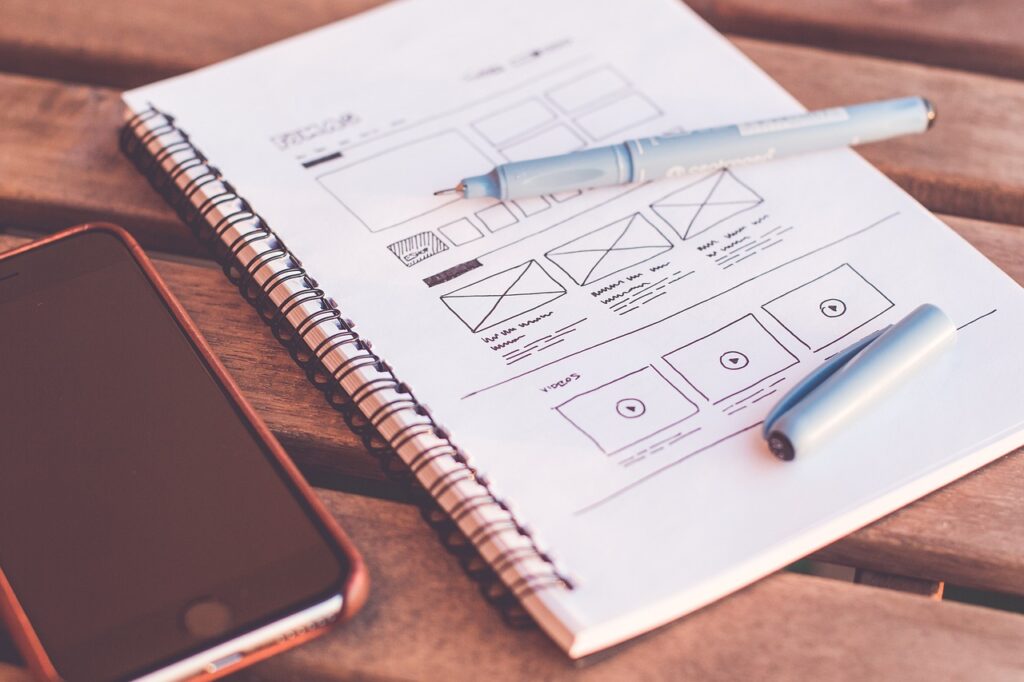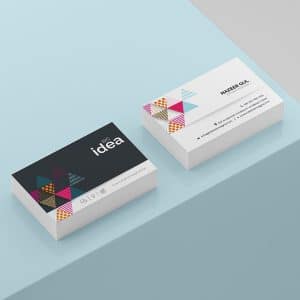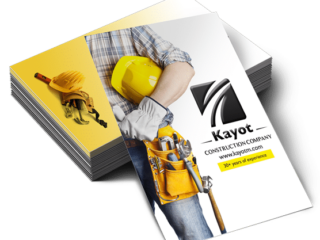Last Updated on October 28, 2024 by Carlos Alonso
Web design can seem intimidating, especially for those just starting. With the right guidance, however, even beginners can create appealing, user-friendly websites. Whether you’re building a website for yourself or for a business, these foundational tips will help you set up a site that looks professional and delivers a great user experience. Here are seven essential web design tips to get you started!
1. Focus on a User-Centric Design
One of the first steps to effective web design is to put yourself in the users’ shoes. A user-centric design prioritizes the needs and behaviors of your visitors, making the site intuitive and enjoyable to navigate. A website should be easy to use, allowing visitors to find the information they need quickly. Start by mapping out what users expect to see when they land on your site. A good rule of thumb in website design is to keep layouts clean and focused, reducing clutter and guiding users through your site effortlessly.
Catdi Printing’s web design services offer a great example of presenting information clearly, guiding visitors to essential sections without overwhelming them. When simplicity is done right, it encourages user engagement and increases the chances of them taking action—whether that’s contacting you, making a purchase, or signing up for a newsletter.
Why User-Centric Design Matters
User-centered design enhances the user experience, which directly affects how long visitors stay on your site. With too many elements or overly complicated layouts, users can feel lost and may leave quickly. Aim to create a layout that supports seamless navigation, and you’ll likely see higher engagement and conversions.
2. Keep Navigation Simple and Intuitive
An intuitive navigation structure is vital for a smooth user experience. Visitors should be able to access different pages on your site without getting lost. Use a straightforward menu, typically placed at the top of the page, to guide users to essential areas, such as “About,” “Services,” and “Contact” sections. It’s also helpful to add links in the footer to commonly visited pages for users who scroll down.
Think of navigation as the backbone of your site’s structure. Simplified navigation is key to keeping visitors on your site longer and encouraging them to explore further. A pro tip is to avoid overloading your main menu with too many options; instead, use dropdowns for subcategories or secondary links.
Footer Navigation as a Supplement
The footer is an often-overlooked area that can enhance navigation. By adding links to critical pages at the bottom of each page, you provide a secondary, easy-to-access navigation path. For instance, adding social media links, a “Privacy Policy,” or “Terms and Conditions” in the footer can help users find additional information they may be looking for, enhancing the overall accessibility of your site.
3. Use Responsive Design for All Devices
In today’s mobile-first world, having a responsive website is a must. Responsive design means your website adapts to various screen sizes, from smartphones to tablets to desktop computers, ensuring a consistent experience for all users. Not only does this improve usability, but it also benefits SEO, as search engines like Google favor mobile-friendly sites.
Responsive design has become standard in modern web development, allowing users to interact with the same website seamlessly on any device. For beginners, using responsive frameworks or themes is an efficient way to design a website that is mobile-friendly without Custom website design allows you to create a unique identity for your brand. coding.
The Impact of Mobile Responsiveness on SEO
Mobile responsiveness goes beyond aesthetics—it has a direct impact on your site’s search engine ranking. Google favors mobile-friendly websites, so having a responsive design can be the difference between a higher or lower position in search results. For more insights into the benefits of responsive web design, check out resources like Catdi Printing’s web design guide, which emphasizes why responsiveness is crucial for modern businesses.
4. Prioritize Readability and Typography
Good typography can elevate a website’s design, making content easy to read and visually appealing. Choose simple and professional fonts for the body text and reserve more stylized fonts for headings or titles. Limit the number of font types to maintain a cohesive look; typically, two or three fonts are sufficient. Additionally, ensure adequate contrast between text and background colors so that your content remains accessible to all readers.
For instance, sans-serif fonts like Arial or Helvetica are often ideal for body text due to their legibility, while a more decorative font might work well for titles or brand elements. Font size also matters—body text should generally be between 16px to 18px to ensure readability across devices, which is one of the best practices in web design.
Enhancing Readability with Line Spacing and Contrast
Spacing plays a key role in readability. Use adequate line spacing (usually 1.5 or more) to give text room to breathe. Contrast is another factor; high contrast between text and background improves readability, especially on smaller screens. Remember, readability directly impacts how long visitors stay engaged with your content, so choose fonts and colors that enhance the reading experience.
5. Use Color Wisely to Reflect Your Brand
Just like in printing, color in web design is a powerful tool that extends beyond aesthetics to set the tone and mood of your brand, influencing how customers perceive and interact with it. Thoughtful color choices communicate your brand’s personality and values and can even evoke specific emotions. When selecting a color scheme, it’s often best to stick with a few core colors—ideally, those already associated with your brand and logo—to maintain a cohesive and recognizable look without cluttering the design. Each color has its own psychological impact: blue conveys trust and professionalism, while green suggests growth and nature.
If you’re unsure of where to begin, many web design tools provide pre-set, visually balanced color schemes. For brand-specific sites, always refer to your brand guidelines to ensure consistency. Thoughtful color choices can enhance the overall design and create a strong, memorable impression for your audience.
Color Psychology and User Interaction
Color also affects how users interact with your website. For example, using a bold color for call-to-action (CTA) buttons can make them more noticeable and increase click-through rates. Colors can evoke emotions and influence users’ decisions subtly; thus, a well-thought-out color palette can lead to better engagement and conversions.
6. Add Visual Elements to Engage Visitors
Visual elements like images, illustrations, and videos can make your website more engaging and visually interesting. High-quality visuals draw users in, helping them understand your brand or message more effectively. Instead of relying solely on stock images, which can feel generic, consider using original photos or custom illustrations that reflect your business’s identity.
Including images of your team, products, or real-life scenes related to your industry can foster a connection with users. When images are used strategically, they not only break up text-heavy sections but also improve the overall user experience. However, ensure that visuals do not overwhelm the site; they should complement the content, not distract from it.
Optimizing Visuals for Faster Loading
While visuals add appeal, they can also slow down your website if not optimized correctly. Large image files can increase loading times, negatively impacting the user experience and SEO. To avoid this, compress images without sacrificing quality, use next-gen formats like WebP, and set up lazy loading for images below the fold. These optimizations make your site faster and improve the browsing experience, especially for users on mobile devices.
7. Maintain Consistency and Balance Throughout Your Design
Consistency is key to creating a cohesive and professional website. This means maintaining uniformity in color schemes, typography, and layout across all pages. Each element on your website should complement the others, creating a balanced and harmonious appearance. Consistency builds trust with users by creating a predictable and reliable browsing experience.
Another important aspect of balance is the use of white space. Allowing adequate space around content, images, and buttons ensures that each element can “breathe,” making the site feel open and uncluttered. White space in website design helps direct focus and guides users to the most important areas of the page, such as calls-to-action or key content.
Building Unity with Consistent Design Patterns
Using consistent design patterns across your website enhances the user journey. Design elements like button styles, icon usage, and font choices should follow a pattern to maintain visual continuity. For inspiration on how to apply these principles effectively, refer to Catdi Printing’s custom web design services, where attention to detail ensures each website is cohesive and easy to navigate.

Additional Tips for Website Maintenance and Improvement
Now that you’ve established a strong foundation with the basics of web design, maintaining and improving your website over time is crucial. Regular updates and maintenance help keep your website fresh, secure, and aligned with current design trends. Let’s go over some essential maintenance tips that will keep your site running smoothly and enhance your design skills as you grow.
1. Keep Content Updated and Relevant
Fresh content is more than just an engagement tool—it’s a powerful signal to search engines that your website is active, relevant, and up-to-date; by regularly refreshing key pages, like “About Us” and “Services,” you ensure that your online presence reflects any recent changes in your offerings or brand. Adding a blog section can further enrich your site by providing a space to share valuable insights, industry updates, or timely tips with your audience.
However, to maintain this frequency of updates, having a user-friendly content management system (CMS) is key, and this is where WordPress shines. WordPress allows businesses to quickly and easily update content without requiring extensive technical knowledge. This ease of use makes it simpler to add fresh articles, update service descriptions, and optimize pages to keep your content relevant and engaging.
Incorporating high-quality, SEO-optimized content is crucial. It not only helps your site rank better in search engine results but also makes it easier for potential customers to find you. Balancing keywords naturally within the text is essential—quality content that feels genuine resonates better with audiences and search engines alike.
If you’re looking for inspiration on how to create engaging, search-friendly content, check out Catdi Printing’s web design blog. They cover a range of valuable topics in a way that resonates with their audience, showing how consistent, thoughtful updates can make a difference.
2. Conduct Regular Design and Performance Audits
As your website grows, it’s essential to evaluate its performance periodically. Conducting design and performance audits helps identify areas for improvement, such as slow-loading pages, broken links, or design elements that no longer align with your brand.
Page load speed is especially important, as slow-loading sites can lead to higher bounce rates. Use tools like Google PageSpeed Insights or GTmetrix to analyze your site’s loading times and identify optimization opportunities. By keeping your site fast and user-friendly, you can improve both user satisfaction and search engine ranking.
3. Stay Up-to-Date with Design Trends
Web design is an evolving field, with trends changing frequently. Staying updated on the latest design trends can keep your site looking modern and relevant. While not every trend will suit your brand, experimenting with new ideas can help keep your website fresh and engaging. Elements like micro-animations, dark mode options, and minimalist layouts are some examples of current trends that can enhance user experience without overwhelming the design.
However, always prioritize usability and brand consistency over blindly following trends. Your website should be a reflection of your brand’s personality, and every design choice should have a clear purpose. If you’re ever unsure about which trends align with your brand, consider consulting professionals, as Catdi Printing’s design team does for their clients, ensuring every design decision adds value.

The Importance of Learning and Growing as a Beginner Designer
As a beginner in web design, continuous learning is essential to refine your skills and stay competitive. Embrace feedback from users, clients, or mentors to gain insight into areas where you can improve. Whether it’s mastering new design software, learning basic coding skills, or studying user experience principles, investing time in skill-building will make you a more versatile designer.
Utilize Online Resources and Communities
Many resources and communities are dedicated to helping beginners in web design. Platforms like YouTube, online courses, and forums such as Reddit’s r/web_design offer tutorials and advice from experienced designers. Networking with other designers can provide inspiration, solutions to common challenges, and tips for improving your work.
Practice with Real Projects
Practical experience is one of the best ways to grow your skills. If possible, work on personal or volunteer projects to gain hands-on experience. Experimenting with different design elements, layouts, and tools will build your confidence and help you develop a style that resonates with users. Over time, you’ll be able to tackle more complex projects, creating websites that not only look good but are also user-friendly and functional.
Final Thoughts: Building a Foundation in Web Design
Starting in web design can be challenging, but by following these foundational tips, beginners can create functional, visually appealing websites that engage users and build credibility. From focusing on user-centered design to keeping content fresh and relevant, each step you take contributes to a stronger online presence for your brand or business.
Whether you’re designing a personal site or working with clients, these beginner tips will serve as a strong starting point. As you grow, don’t hesitate to seek guidance from seasoned professionals, experiment with new trends, and continue improving your skills. A well-designed website is an investment that pays off, not just in user engagement but also in brand credibility and business growth.
Remember, each design decision impacts how users perceive and interact with your site. By following these tips and continually refining your craft, you’ll be well on your way to becoming a skilled web designer capable of building sites that make a lasting impression.
















